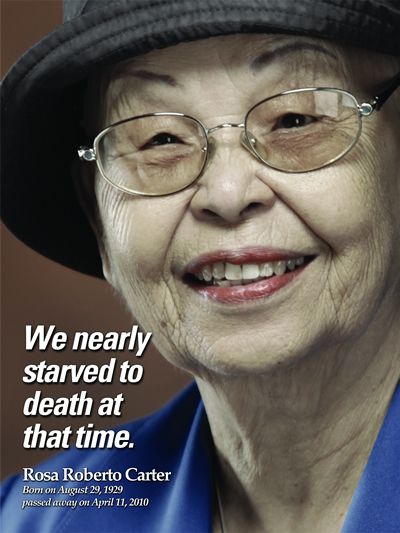 When Japan occupied Guam 62 years ago, I was 12 years old, the oldest child in our family. My mother would have another child during the occupation, and her last one after the war, for a total of nine of us who made it through childhood. In regard to physical damage from the war, I am sure the effects of malnutrition on my parents, as well as nine of us kids, was severe in both the near term and over the following years.
When Japan occupied Guam 62 years ago, I was 12 years old, the oldest child in our family. My mother would have another child during the occupation, and her last one after the war, for a total of nine of us who made it through childhood. In regard to physical damage from the war, I am sure the effects of malnutrition on my parents, as well as nine of us kids, was severe in both the near term and over the following years.
There’s no way to know all the negative effects of the two years of malnutrition we were forced to experience during the occupiers who confiscated our food for themselves. In the last two weeks, they forced us into more difficult situations involving a forced march and virtual imprisonment in a squalid camp, where there was no food at all. We older kids foraged for our family, searching wild lands for many miles. We nearly starved to death at that time.
In regard to immediately visible physical damage, most of us suffered wounds from being forced into the jungle, where we contacted scarring napalm from the United States bombing of the Japanese. When the bombing stopped, we were forced to go back to clearing bushes, which were dripping with this napalm. And in a proper setting, I could show you some scars, which have irritated me for 60 years. One of my brothers lost parts of two fingers, as well, from the live ammunition scattered over so much of Guam after the fighting in 1944.
And at one time, I found myself clinging to a large breadfruit tree while American planes attacked. Human limbs, arms and legs, flew through the air on their own. People screamed in the grip of hysteria. I saw people going berserk.
My own forced labor consisted, at first, of clearing fields in the Mangilao area. My brother Juan was also forced to do this too. At this time I was singled out by the Japanese soldiers, locked up in a tiny room at the old Price Elementary school house, and interrogated about my loyalty to the United States. It may have had something to do with my slightly lighter skin color, but the terrifying experience is still vivid in my mind. Also, at this time, I was given the extra duty of carrying their lunches to Japanese soldiers located at the present site of the Father Duenas Memorial School.
Our forced march started for me late one afternoon, when my brother and I returned from working in the fields to find my parents and my siblings loading our bull cart with as much food and personal belongings as possible. People congregated at the Mangilao school areas, where the trek to Manenggon concentration camp started around twilight. We trudged along on foot all night. Weak people fell by the way side. I do not know what happened to them.
In regard to the constant terror of being an occupied people, earlier in Mangilao, many of us were forced to line up in orderly rows to witness the beating of a family for the crime of trying to hide some of its food from the Japanese occupiers. If we showed any emotion, we would have been beaten too. We practiced a code of silence because that means collaborators might be anywhere at any time.
Near the end of the war out here in Guam, because tomorrow men were being forced to the front lines where they were to be sacrificed as human targets, my father went into hiding. As a survivor, immediately he led his entire family back to Mangilao. The regimentation of our lives extended to digging our own graves in the last days at Manenggon.
Real People. Real Stories. A weekly testimonial series provided by the Office of Senator Frank F. Blas. The testimony of Rosa Roberto Carter is recorded in the Guam War Claims Review Commission public hearing held in Hagåtña, Guam on December 8, 2003. This story sponsored by the community involvement of Guam Premier Outlets (GPO). Photo courtesy of Expressions Studio.
 |
 |
